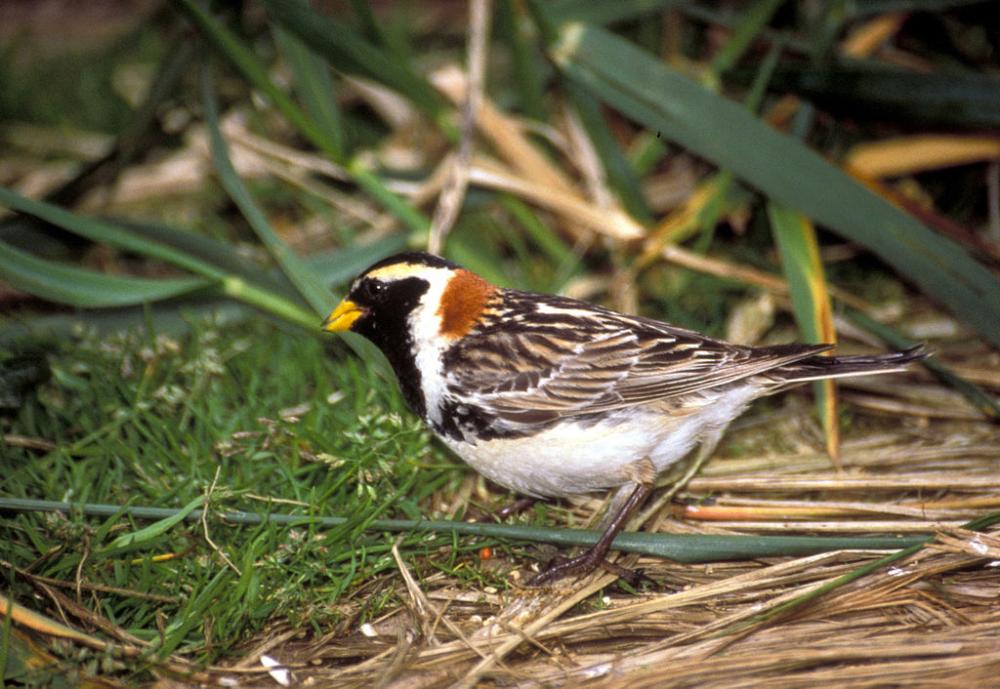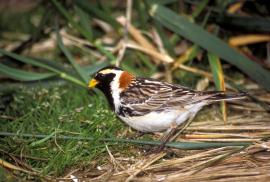Guide to Boreal Birds
Overview
The Lapland Longspur, like the Snow Bunting, has a long hind toenail, which may aid it in walking since these birds run or walk rather than hop, as other finches normally do. Like other longspurs, it is almost invisible on the ground; often a whole flock will dart into the air at an observer's feet, only to disappear again when they land on bare ground a few hundred yards away. The most common small bird in the vast expanses of sedgy, moist tundra, the Lapland Longspur is bold in breeding territories, but wintering flocks are wary. This species is the only one of four longspurs that is found in both hemispheres.
Description
6-7" (15-18 cm). Sparrow-sized. The only longspur in most of the East. Breeding male has black face, crown, and upper breast; chestnut nape; and is streaked above and white below, with streaked flanks. Female and winter male dull and without bold pattern; best identified by largely black tail with white outermost feathers. Smith's Longspur has a similar tail, but is always buff above and below and usually shows a small white wing patch.
Voice
Rattling call. Flight song is sweet and bubbling.
Nesting
4 or 5 pale, olive green eggs, heavily spotted with brown and purple, in a grass-lined hollow in the ground, concealed under a clump of grass or a dwarf birch.
Habitat
Arctic tundra; winters in open windswept fields and on grassy coastal dunes.
Range/Migration
Breeds from Aleutians, Alaska, and Arctic islands to northern Quebec. Winters regularly throughout northern states to California, Texas, and New York. Also in northern Eurasia.



